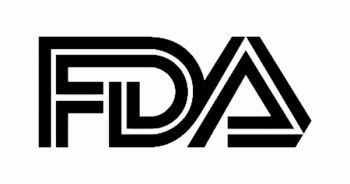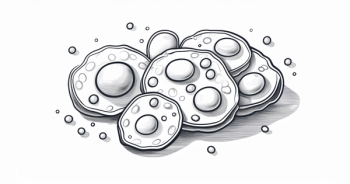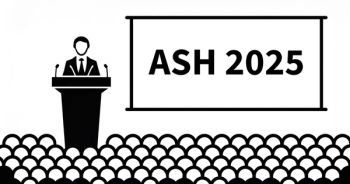
Peers & Perspectives in Oncology
- August 2025
Frailty Is a Key Consideration in Transplant-Ineligible NDMM
During a live event, Taewoong Choi, MD, discussed the current state of therapy for transplant-ineligible newly diagnosed multiple myeloma.
As multiple myeloma treatment approaches are being optimized in both transplant-eligible and -ineligible settings, the priority for transplant-ineligible patients is to maintain efficacy while giving less intense treatment. The fitness of these patients to tolerate treatment must always be considered on a case-by-case basis, but highly efficaciously therapy is possible even in older patients with greater frailty. In a recent
Targeted OncologyTM: What treatments do the NCCN guidelines recommend for an older, transplant-ineligible patients with newly diagnosed multiple myeloma (NDMM)?
Taewoong Choi, MD: In the NCCN guidelines, Dara-Rd [daratumumab (Darzalex), lenalidomide (Revlimid), and dexamethasone] is one of the preferred regimens, and also now included in the recommendations is Isa-VRd [isatuximab (Sarclisa), bortezomib (Velcade), lenalidomide, and dexamethasone]. That's one of the new regimens, a 4-drug combination; 4 drugs is going to be better than 3 drugs in efficacy, but at the same time, we need to be careful about how to give it for a frail patient, because in this age group, the frailty matters. It does affect the outcome of the treatment. Also, VRd [bortezomib, lenalidomide, and dexamethasone] is one of the regimens we can use. The MAIA regimen of Dara-Rd, the IMROZ regimen of Isa-VRd, and also VRd or VRd-lite, are what we can use as a preferred regimen.1
Considering factors like age, comorbidities, logistics, and safety, in which scenario would you not use a triplet regimen?
We need to consider all of this when you choose the regimen. [Considering] 3 drugs vs 4 drugs, 3 drugs are relatively easier to tolerate, so choosing 3 drugs is easier when compared with deciding to give a 4-drug combination like Isa-VRd. But when you compare the 2-drug vs 3-drug [regimens], the efficacy difference is quite clear. Right now, the MAIA regimen of Dara-Rd, a 3-drug regimen, is a pretty reasonable option, but at the same time, you need to focus on the details about the dosing schedule and how you adjust the dose.
What data support the use of VRd in the transplant-ineligible population?
SWOG S0777 [NCT00644228] was an older study. This study was performed in 2008 and is ongoing. These are rather old data, but this is probably the one of the first [trials] which showed the survival benefit of VRd regimen clearly in all age groups, including transplant-ineligible patients.2 There was an VRd vs Rd [lenalidomide plus dexamethasone] comparison, and because they're not transplant eligible, they focused on maintenance with the Rd. But if you compare VRd with 3 drugs vs Rd with 2 drugs, the progression-free survival [PFS] curve is clearly better with the VRd 3-drug combination. When they looked at patients aged 65 or higher, in that group there's a benefit. Then, overall survival [showed benefit for] VRd vs Rd, but when they focus on the age group, there's a difference if the patient age is older. So when you look at the details, if you focus on a younger patient, 65 or younger, Rd or VRd, essentially, what you can say is the VRd vs Rd comparison matters too, but at the same time, the age group matters too. What we can speculate based on the data is the frail patient’s outcome may be inferior even when they receive a superior regimen. So frailty score and how they can tolerate the regimen matters in this age group.
What safety concerns were there with the VRd regimen?
About the adverse events, we know the culprit is the bortezomib. In this study, the bortezomib was IV [intravenous], and it was given on days 1, 4, 8, and 11, [which is] twice a week. If you keep giving that regimen, most people will eventually develop bad neuropathy. That was a change we have learned nowadays. The standard practice is subcutaneously just once a week, and you need to be proactive in adjusting your dosing regimen.
When I started at Duke in 2017, I used VRd-lite a lot, especially for transplant ineligible and frail patients, because we wanted to minimize the toxicity while giving similar benefit to RVd. Essentially, they use the lower dose [of lenalidomide], and then they give bortezomib once a week. By doing so, the benefit was still there, but patients could tolerate it better.3 For a while it was the preferred regimen for transplant-ineligible and frail patients.
But when the MAIA study results came up, we gradually moved on from VRd-lite to [Dara-Rd]. I think one of the benefits was that this regimen doesn't include bortezomib. In an older patient population, if you consider giving multiple cycles of bortezomib, it's going to lead to some issues. Most patients do not tolerate it that well, so that's a practical challenge.
Could you describe the outcomes of the phase 3 MAIA trial in more detail?
[The MAIA trial] essentially compared Dara-Rd vs Rd in transplant-ineligible newly diagnosed multiple myeloma. This regimen is supposed to be continued until disease progression.
With a median duration of follow-up of over 5 years, the rate of complete response [CR] or better in Dara-Rd vs Rd was 51% vs 30%.4 The result is clearly better with the Dara-Rd. The MRD negativity rate is 32% vs 11%, and sustained MRD negativity at 12 months and 18 months, it is better with Dara-Rd. With the updated longer duration of follow-up, clearly there was PFS benefit with the 2 lines well separated, even with the longer follow-up [HR, 0.55; 95% CI, 0.45-0.67; P < .0001]. With overall survival, it was the same thing [HR, 0.67; 95% CI, 0.55-0.82; P <.0001].5
Because you are giving 3 drugs compared with 2 drugs, you see more issues like myelosuppression, infectious complication, and gastrointestinal issues, so we have to monitor for that.
How did Dara-Rd perform in patients with frailty?
There is some further analysis depending on the frailty of the patient.6 Frailty matters in this population. You see some separation [in PFS] depending on their frailty. Even patients who received the same regimen, patients who are non-frail vs frail, there's a difference in the outcome [HR, 0.48 vs 0.62, respectively]. But one thing that is different when compared with other data we have seen before is, it's not crossing. Here, you still see the Dara-Rd’s superiority even in the frailty group when compared with Rd, like in a non-frail population. So, the benefit of adding a CD38 antibody is quite clear, even in the frail patient population. Not using bortezomib in this regimen is a huge plus for the older patient population. [Additionally,] there's some difference depending on their age group and frailty.4
How will the SWOG S2209 study (NCT05561387) investigate the optimal use of these regimens?
This is an ongoing study. They now want to compare VRd [with Dara-Rd], and then, essentially, [Dara-Rd followed by] lenalidomide vs daratumumab/lenalidomide in the maintenance phase. They're wanting to compare a lot of things. This is an ongoing study and we're going to see the result in a few years; it just got started.
DISCLOSURES: Choi had no known relevant disclosures.









































